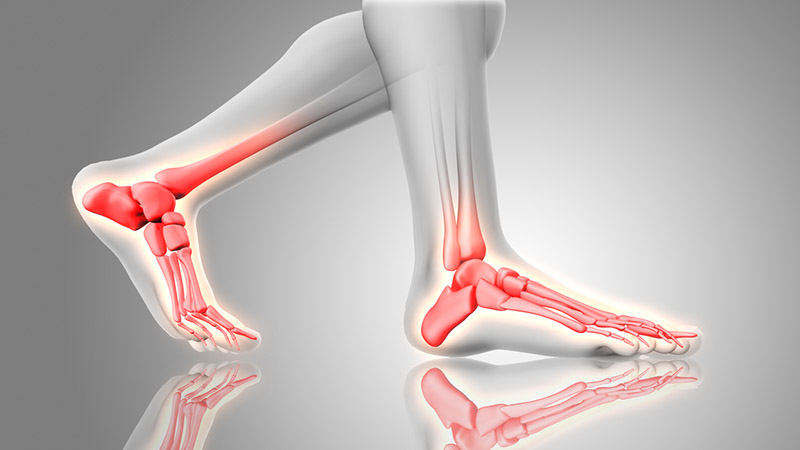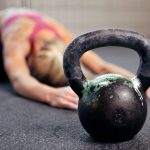Humans are the best movers in the animal kingdom. Our body and neuromuscular system is designed for movement, and has evolved over time for this reason. Humans are bipedal animals, meaning that we have adapted the ability to walk on our two rear limbs and feet. This is a rare trait that most animals do not possess. The human body is meant to walk, run, and locomote on two legs, and when working properly a human gait pattern is flawless. Everything starts with the foot and ankle, as this is the only point of contact that humans have with the ground when moving bipedally. Foot/ankle integrity and function is incredibly important, and this area must work well on its own and along with all of the joints and muscles upstream (most importantly the hips), in order to keep us stable and efficient. There has been a steady increase in the amount of foot and ankle problems and related lower extremity orthopedic problems (knee, hip, low back) in the past century, which happens to coincide with more cushioned and supportive footwear, a massive increase in the use of orthotics, more fashionable and less functional shoes, more sitting, and less moving like humans are supposed to.
So what were our feet designed for?
First of all, they were not designed to be in shoes. The foot works best when it is bare and free of shoes – it can work like a foot is designed to work. Human feet are evolutionarily designed for repetitive bipedal locomotion. Our feet have the exact same bones as apes have, with a slightly different orientation. Apes feet were not designed for bipedal locomotion and repetitive weight bearing, and are meant for grasping and climbing. As humans, our feet are meant for repetitive loading. In order to walk or run efficiently and like we were designed to, our feet need to become rigid levers as we bear weight through them. Our feet are essentially bags of bones that must be controlled and made rigid by ligaments, tendons, muscles, and fascia.
The more rigidity the foot has, the more powerful and efficient we are as we locomote. The ability to turn the foot into a rigid lever (a uniquely human trait), depends on the strength, control, and stability of the intrinsic foot muscles and a few key lower leg muscles that attach into the foot. Some of these key muscles include the interossei (intrinsic foot muscles in between the metatarsal bones of the foot), the tibialis posterior, tibialis anterior, and peroneal muscles of the lower leg. All of these muscles have different functions which I won’t get into, but they all serve to help stabilize and control the foot and create a rigid lever to absorb and transmit forces as we locomote.
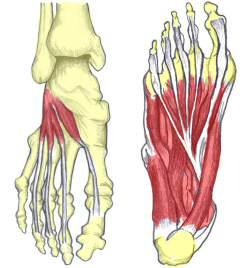
The muscles mentioned (along with a few others) also work to help create the arches of the foot. The foot has three arches, which we need for optimal bipedal locomotion as humans. These arches also help create the rigid lever effect when weightbearing. The more we walk and bear weight through our feet, the stronger and more efficient the arches become, and the better our feet work. The better our feet work, the better we are at absorbing and transmitting forces as we walk. This is the basis of how we start to form strong and stable feet as we develop as children. So as we evolved, did the human arch allow for bipedal locomotion, or did bipedal locomotion create the human arch? Many experts will tell you that it’s a combination of both. What we do know is that the best way to create a strong and stable foot/arch is to use the foot according to how it was designed, and this happens to be barefoot.
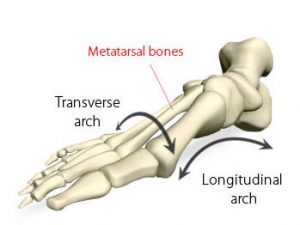
Where did we go wrong?
This is a complex question with no simple answer. A major contributor to foot and ankle dysfunction is the introduction of the shoe. The shoes of today wreak havoc on our feet. Most shoes have an elevated heel, which systematically shortens our heel cords as we walk. Most shoes have a toe box that narrows, however the foot naturally expands and splays outwards. This restricts our feet and scrunches our toes together, preventing them from splaying and preventing all of the muscles from working like they are supposed to. High heels and dress shoes are the worst of both worlds, significantly shortening our heels cords and scrunching our toes together.
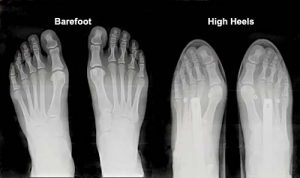
Many shoes have a large amount of cushioning, which allows us to walk and run with poor mechanics and get away with it (sending all of these additional forces up the chain to other joints). Cushioning also deprives our feet of any sensory stimuli from the ground, and puts our sensory nerves to sleep. Our feet are super rich in sensory nerves, which are meant to feel and perceive variations in ground texture in order to assist with our balance and control. Many shoes are overly supportive, which creates an environment where our foot muscles no longer have to work to stabilize, and become weak and inhibited over time. When the foot is supported, the function of our arches is relied on less, and the muscles and tissues involved in creating them stop working properly. In addition, orthotics are necessary and indicated in many cases, but they happen to be grossly overprescribed. Many times the orthotics lead to the artificial support of the feet and arches, which greatly contributes to the dysfunctional foot epidemic. The purpose of a shoe should be to protect the skin of the foot from cuts and trauma, but it should not interfere with how the foot works. Foot dysfunction begins in developing children, when we interfere with the natural process of creating a strong and efficient foot and arch.
There are other reasons for why foot dysfunction exists today. The introduction of the chair and desk bound lifestyle has not helped things. This has lead to an epidemic of lower extremity problems, weak and restricted hips, and lead to poor overall control/function in the lower extremity. As mentioned before, the hips also play a major role in foot control and function – which is beyond the scope of this article. People are generally walking and moving less, and sitting more in today’s society. The mechanical loads alone that are needed to stimulate the proper strength and stability of our bodies are missing.
So where do we go from here?
A good way to start is to learn how the foot works at a basic level, how to control it and strengthen it, and how it can be used more efficiently. A simple way to begin is to spend some more time barefoot, bit by bit. Start slow, but give your feet the sensory stimulation and freedom they need to work like they were designed to work. Perform regular maintenance work on your feet to offset some of the effects of shoes. Use your feet more, and be aware of what they are doing while training, running, walking, and at rest. Treat your feet well, they are incredibly important.
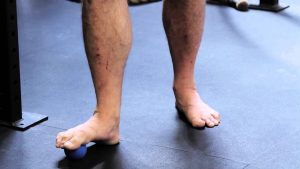
There will be future articles with more detail on foot strength, function, footwear etc. Stay tuned.
Mike


